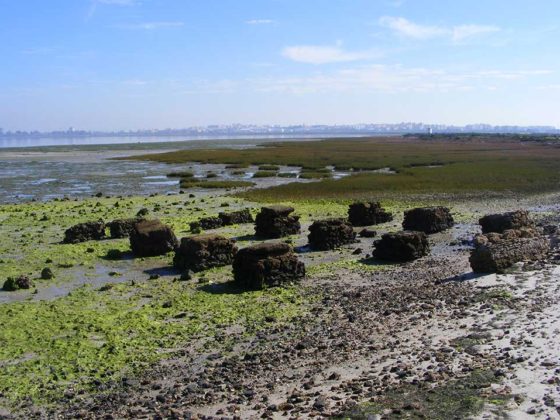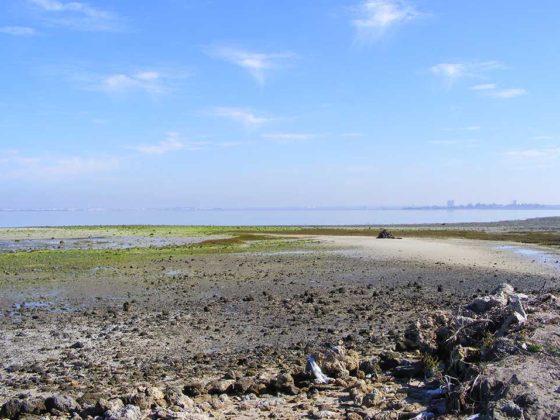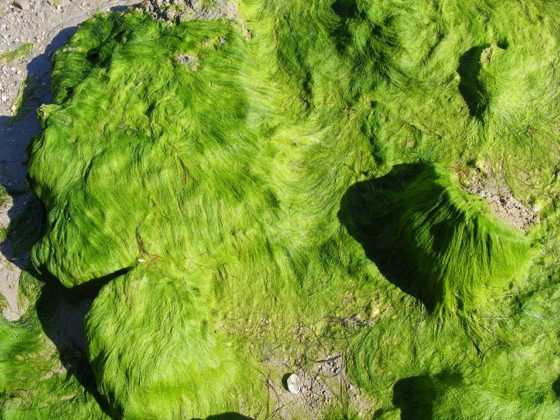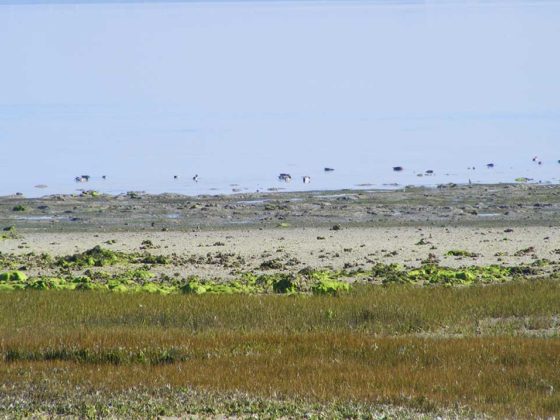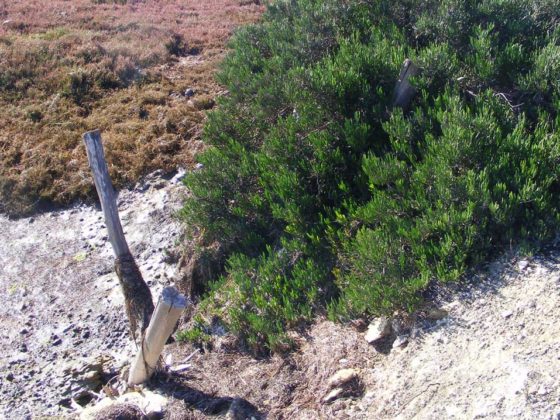Intertidal plains of mud and edges of Caño del Río Arillo
The intertidal flats of the municipality of Cadiz are located in the inner part of the Bay, on the left bank of the road that leads from Cadiz to San Fernando, and on the outside, the area of La Dolores and Roquetas salt marshes. Moreover, the Arillo River is actually a tidal spout.
These are shallow water areas, subject to tidal flow and are very rich in nutrients. They are colonised by highly productive marine plant species that enable rapid plant growth and therefore an early stabilisation of muds, both algae and Enteromorpha unza, the Sea Lettuce (Ulva lactuca) and the Codium tomentosum as well as marine phanerogams (marine plants that present flowers, fruits and seeds). Of the four species present in Western Europe, three are present in the Bay; Cymodocea nodosa, Zostera noltii and Zostera marina. Among its functions, it is worth noting the protective role that coastal erosion plays; its contribution to improving water quality, being important areas where atmospheric CO2 is retained, as well as harbouring high biological diversity (it provides refuge areas, it helps with breeding and it is responsible for feeding a big community of organisms -fish, annelids, molluscs, etc – some of great commercial interest in the bay of Cadiz). However, due to the pressures exerted by the agglomeration of the population in the coastal areas and the anthropogenic pressures, these marine ecosystems are in decline on a global level.
At low tide, the different species of shorebirds (plover, sandpiper, redshank, bar-tailed godwits, …) use feeders and eat the prey that are buried in the mud. Meanwhile, flamingos filter the water with their beak, feeding on small crustaceans that live in the water on the mud, like brine shrimp. At high tide, it´s the birds´ turn to feed on fish (ichthyophagous), such as cormorants, terns, ospreys, grebes, seagulls, herons, egrets, ….
The same happens with the edges of the tidal channels such as the Arillo River which is the natural border that separates the municipality of Cadiz from that of San Fernando.
In these areas, shellfishing is of great importance and it is mainly carried out in the inner part of the bay or in the cultivation fields of molluscs, such as those in front of salt marshes of La Dolores and La Roqueta.
As for the invertebrate species, which are the basis for the feeding of shorebirds (they feed on muds) and fish, we would like to highlight the Polychaete worm (Marphysa sanguinea), the Tubeworm (Diopatra neapolitana), the Ragworm, the Peppery Furrow Shell (Scrobicularia), the Grooved carpet shell (Tapes decussatus), the Tapes aureus, the Common cockle (Cerastoderma edule), the Grooved razor shell (Solen marginatus), the Purple dye murex (Murex brandaris), the Turbinate monodont (Monodonta turbinata) and the Upogebia deltaura.
As for the fish, there are more than 48 species that spend some phases of their life cycle in the marshes, after which they return to the sea for adult life. Some species use the pipes only as breeding grounds for young fish, where they find abundant food and protection from predators. Others use them both for this trophic phase and for spawning. Only some species, such as the Big-Scale Sand Smelt (Atherina boyeri), the Common Goby (Pomatoschistus microps) and the Mummichog (Fundulus heteroclitus) can be considered sedentary species, which complete their life cycle in these waters. As regards the commercial species used in the aquaculture facilities of the entire bay, we would like to highlight the Gilthead Seabream (Sparus aurata), the European bass (Dicentrarchus labrax) the Spotted Seabass (Dicentrarchus punctatus), Golden Grey Mullet (Liza aurata), the Thinlip Mullet (Liza ramada), the Senegalese sole (Solea senegalensis), the Flathead Grey Mullet (Mugil cephalus) and the Leaping Mullet (Liza saliens).
